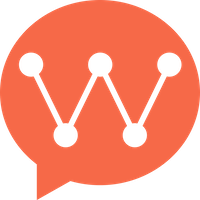Overview
Get the IM connection address for users, including TCP, WebSocket, and WebSocket Secure addresses.
Query Parameters
Whether to return intranet address
0 - Return external network address1 - Return internal network address
curl -X GET "http://localhost:5001/route?intranet=0"
{
"tcp_addr": "127.0.0.1:5100",
"ws_addr": "ws://127.0.0.1:5200",
"wss_addr": "wss://127.0.0.1:5300"
}
Response Fields
TCP connection address, format: host:port
WebSocket connection address, format: ws://host:port
WebSocket Secure connection address, format: wss://host:port
Status Codes
| Status Code | Description |
|---|
| 200 | Successfully retrieved IM connection address |
| 500 | Internal server error |
Use Cases
Client Connection Setup
Dynamic Connection Discovery:
// Get connection addresses and establish connection
async function connectToWuKongIM() {
try {
// Get connection addresses
const addresses = await fetch('/route?intranet=0').then(r => r.json());
// Choose appropriate connection type based on environment
let connectionUrl;
if (window.location.protocol === 'https:') {
connectionUrl = addresses.wss_addr;
} else {
connectionUrl = addresses.ws_addr;
}
// Establish WebSocket connection
const ws = new WebSocket(connectionUrl);
ws.onopen = () => {
console.log('Connected to WuKongIM:', connectionUrl);
};
return ws;
} catch (error) {
console.error('Failed to connect to WuKongIM:', error);
}
}
Load Balancing
Multiple Server Discovery:
// Get addresses from multiple servers for load balancing
async function discoverWuKongIMServers(serverList) {
const availableServers = [];
for (const server of serverList) {
try {
const response = await fetch(`${server}/route?intranet=0`);
const addresses = await response.json();
availableServers.push({
server: server,
addresses: addresses,
priority: calculateServerPriority(server)
});
} catch (error) {
console.warn(`Server ${server} is not available:`, error);
}
}
// Sort by priority and return best server
availableServers.sort((a, b) => b.priority - a.priority);
return availableServers[0]?.addresses;
}
Environment-based Connection
Internal vs External Network:
// Choose connection type based on network environment
async function getOptimalConnection() {
try {
// Try internal network first (faster)
const internalAddresses = await fetch('/route?intranet=1').then(r => r.json());
// Test internal connectivity
const isInternalReachable = await testConnectivity(internalAddresses.ws_addr);
if (isInternalReachable) {
return internalAddresses;
} else {
// Fallback to external network
const externalAddresses = await fetch('/route?intranet=0').then(r => r.json());
return externalAddresses;
}
} catch (error) {
console.error('Failed to get optimal connection:', error);
throw error;
}
}
async function testConnectivity(wsUrl) {
return new Promise((resolve) => {
const testWs = new WebSocket(wsUrl);
const timeout = setTimeout(() => {
testWs.close();
resolve(false);
}, 3000);
testWs.onopen = () => {
clearTimeout(timeout);
testWs.close();
resolve(true);
};
testWs.onerror = () => {
clearTimeout(timeout);
resolve(false);
};
});
}
Connection Failover
Automatic Failover:
class WuKongIMConnector {
constructor(serverUrls) {
this.serverUrls = serverUrls;
this.currentServerIndex = 0;
this.connection = null;
}
async connect() {
for (let i = 0; i < this.serverUrls.length; i++) {
try {
const serverUrl = this.serverUrls[this.currentServerIndex];
const addresses = await this.getAddresses(serverUrl);
this.connection = await this.establishConnection(addresses);
console.log(`Connected to server: ${serverUrl}`);
return this.connection;
} catch (error) {
console.warn(`Failed to connect to server ${this.currentServerIndex}:`, error);
this.currentServerIndex = (this.currentServerIndex + 1) % this.serverUrls.length;
}
}
throw new Error('Failed to connect to any WuKongIM server');
}
async getAddresses(serverUrl) {
const response = await fetch(`${serverUrl}/route?intranet=0`);
return await response.json();
}
async establishConnection(addresses) {
return new Promise((resolve, reject) => {
const ws = new WebSocket(addresses.ws_addr);
ws.onopen = () => resolve(ws);
ws.onerror = (error) => reject(error);
setTimeout(() => reject(new Error('Connection timeout')), 5000);
});
}
}
// Usage
const connector = new WuKongIMConnector([
'http://server1.example.com:5001',
'http://server2.example.com:5001',
'http://server3.example.com:5001'
]);
const connection = await connector.connect();
Mobile App Integration
Platform-specific Connection:
// React Native example
import { Platform } from 'react-native';
async function getMobileConnection() {
try {
const addresses = await fetch('/route?intranet=0').then(r => r.json());
// Use appropriate connection for mobile platforms
if (Platform.OS === 'ios' || Platform.OS === 'android') {
// Mobile apps typically use WebSocket
return addresses.ws_addr;
} else {
// Web apps use secure WebSocket if available
return window.location.protocol === 'https:'
? addresses.wss_addr
: addresses.ws_addr;
}
} catch (error) {
console.error('Failed to get mobile connection:', error);
throw error;
}
}
Best Practices
- Connection Type Selection: Choose appropriate connection type based on environment (HTTP/HTTPS)
- Failover Strategy: Implement failover mechanism for high availability
- Network Detection: Detect internal vs external network for optimal performance
- Connection Testing: Test connectivity before establishing full connection
- Caching: Cache connection addresses to reduce API calls
- Error Handling: Handle network errors gracefully with retry logic
- Security: Use secure connections (WSS) in production environments

